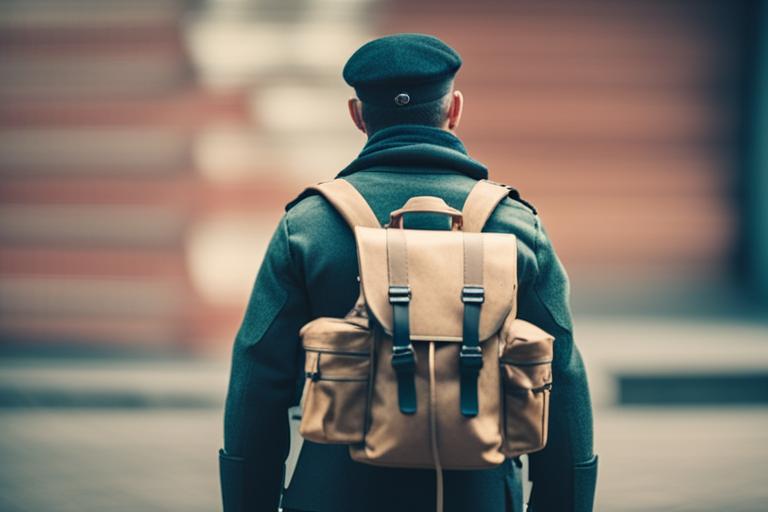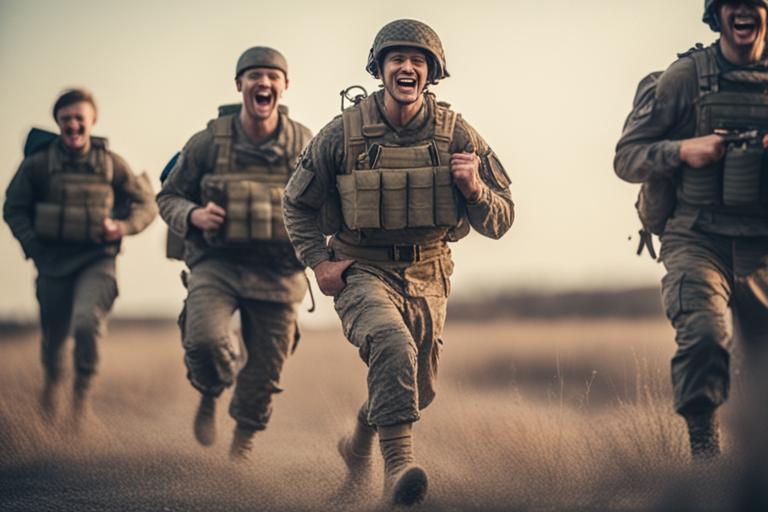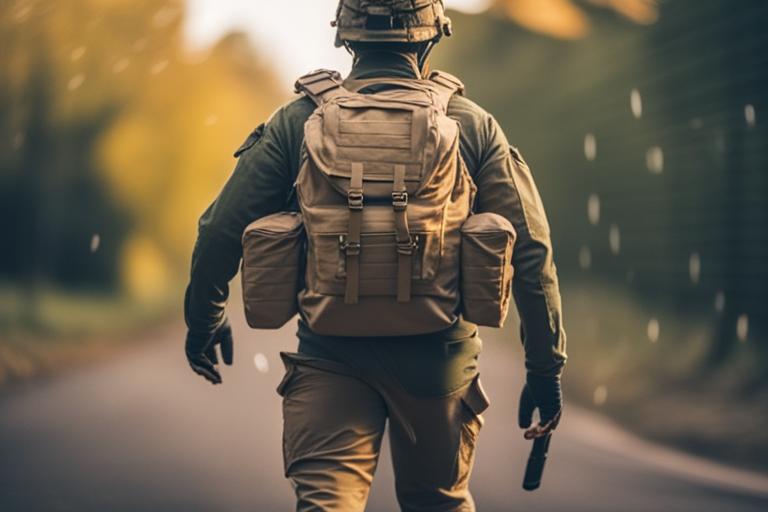Are you interested in learning more about rucking in the military? Rucking is a term used to describe the act of carrying a heavy backpack, called a rucksack or a backpack, while walking or marching over a long distance. It is a crucial component of military training, dating back to ancient times when soldiers would carry heavy loads as part of their training. In this article, we will explore the basics, benefits, and tips for improving rucking performance, so soldiers can become better ruckers and more effective soldiers.
What is Rucking in the Military?
- Rucking is the act of marching or hiking with a loaded backpack.
- It is an essential part of military training and has been used for centuries.
- There are different types of rucking in the military, including individual, buddy, and team rucking.
Importance and Benefits of Rucking in Military Training
- Rucking provides physical benefits such as building endurance, strength, and cardiovascular fitness.
- It also provides mental benefits such as developing mental toughness and resilience.
- Teamwork and camaraderie are also important aspects of rucking.
Tips and Techniques for Rucking in the Military
- Proper form and techniques are important to prevent injury and improve performance.
- Training beforehand and proper nutrition and hydration are also crucial.
- Knowing how to pack a rucksack and adjust it for comfort can also help improve rucking performance.
What is Rucking in the Military?
Definition of Rucking and its Origins in Military Training
Rucking is a military term used to describe the act of carrying a heavy backpack, called a rucksack or a backpack, while walking or marching over a long distance. The term “rucksack” comes from the German word “rucken,” which means “back,” and “sack,” which means “bag.” Rucking has been used in military training for centuries, dating back to ancient times when soldiers would carry heavy loads as part of their training.
Explanation of How Rucking is Used in Military Training
Rucking is used in military training to build physical and mental toughness, endurance, and combat readiness. Soldiers are required to carry a heavy load, usually between 30 and 50 pounds, over a distance of several miles, while wearing their full combat gear. This exercise simulates the physical and mental demands of combat and prepares soldiers to operate effectively in a high-stress environment.

The Different Types of Rucking in the Military
There are several types of rucking in the military, depending on the purpose, location, and duration of the exercise. Individual rucking is done by soldiers on their own, while buddy rucking is done by two soldiers carrying one rucksack between them. Team rucking is done by a group of soldiers carrying multiple rucksacks and is often used for long-distance marches.
Importance of Rucking in Military Training

Physical Benefits of Rucking
Rucking is a highly effective form of exercise that provides numerous physical benefits to soldiers. It helps to build strength, endurance, and cardiovascular fitness, while also burning calories and improving posture. Rucking also strengthens the muscles and joints in the lower body, including the legs, hips, and lower back, which are critical for combat readiness.

Mental Benefits of Rucking
In addition to physical benefits, rucking also provides significant mental benefits to soldiers. It helps to build mental toughness, resilience, and discipline and prepares soldiers to operate effectively in high-stress situations. Rucking also promotes mental clarity, focus, and concentration, which are essential for combat readiness.
Teamwork and Camaraderie in Rucking
Rucking is also an excellent way to build teamwork and camaraderie among soldiers. It requires soldiers to work together to achieve a common goal and encourages them to support and motivate each other throughout the exercise. Rucking also helps to build trust and confidence among soldiers, which is essential for effective teamwork in combat situations.
The Basics of Rucking
Equipment Needed for Rucking
To get started with rucking, soldiers will need a few essential pieces of equipment, including a sturdy, comfortable rucksack that can hold at least 30 pounds of weight, a hydration system that can hold at least two liters of water and is easily accessible while rucking, and appropriate footwear that is comfortable, supportive, and can handle rough terrain.
How to Pack a Rucksack for Military Training
Packing a rucksack is essential for rucking, as it can affect the soldier’s comfort, balance, and performance. Soldiers should pack their rucksack in a way that distributes the weight evenly and keeps the center of gravity close to the body. Heavy items should be placed at the bottom of the rucksack, while lighter items should be placed at the top. Soldiers should also pack their rucksack in a way that makes it easy to access items they may need during the exercise.
How to Adjust Your Rucksack for Comfort
Adjusting the rucksack for comfort is also crucial for a successful rucking exercise. Soldiers should adjust the straps and hip belt to ensure that the weight is evenly distributed and that the rucksack is snug against the body. The shoulder straps should fit comfortably over the shoulders, and the hip belt should sit snugly on the hips.
Types of Rucking in the Military
Individual Rucking
Individual rucking is done by soldiers on their own and is often used for physical fitness training and individual skill development. Soldiers typically carry a rucksack weighing between 30 and 50 pounds and march over a distance of several miles.
Buddy Rucking
Buddy rucking is done by two soldiers carrying one rucksack between them. This type of rucking is often used for team building and to develop trust and communication skills among soldiers.
Team Rucking
Team rucking is done by a group of soldiers carrying multiple rucksacks and is often used for long-distance marches and to develop teamwork and leadership skills. Soldiers in a team rucking exercise must work together to distribute the weight evenly and to maintain a steady pace.
Benefits of Rucking in the Military
Physical Benefits of Rucking
Rucking provides numerous physical benefits to soldiers, including improved strength, endurance, and cardiovascular fitness. It also helps to burn calories and improve posture and strengthens the muscles and joints in the lower body.
Mental Benefits of Rucking
In addition to physical benefits, rucking also provides significant mental benefits to soldiers, including increased mental toughness, resilience, and discipline. It also promotes mental clarity, focus, and concentration, which are essential for combat readiness.
Teamwork and Camaraderie in Rucking
Rucking is an excellent way to build teamwork and camaraderie among soldiers. It requires soldiers to work together to achieve a common goal and encourages them to support and motivate each other throughout the exercise. Rucking also helps to build trust and confidence among soldiers, which is essential for effective teamwork in combat situations.
Tips to Improve Rucking Performance
Personal Story: How Rucking Helped Me Overcome My Limits
When I first started military training, I struggled with rucking. The weight of the rucksack on my back, the long distances, and the difficult terrain were all challenging for me. However, as I continued to train and push myself, I found that rucking became a source of pride and accomplishment.
One particular experience stands out in my mind. During a team rucking exercise, I was struggling to keep up with my team. My rucksack felt heavier than ever before, and my legs were sore and tired. But my team members encouraged me to keep going, reminding me that we were in this together.
As we approached the finish line, I felt a sense of relief and pride wash over me. I had pushed myself to my limits and overcome them. I had also strengthened the bond with my team members, who had supported me throughout the exercise.
Since then, rucking has become one of my favorite parts of military training. It has taught me the value of perseverance, teamwork, and camaraderie. I encourage all soldiers to embrace rucking as a way to build physical and mental resilience, and to push themselves to achieve more than they thought was possible.

Proper Form and Techniques for Rucking
| Workout Name | Description | Benefits |
|---|---|---|
| 5-mile ruck march | A 5-mile ruck march with a 45-pound rucksack. | Builds endurance and cardiovascular fitness. |
| 1-2-3 workout | This workout involves a 1-mile ruck with a 50-pound rucksack, followed by 100 push-ups, 200 sit-ups, and 300 squats. | Builds overall strength and endurance. |
| Tabata ruck workout | This workout involves 8 rounds of 20 seconds of all-out effort, followed by 10 seconds of rest, with a 45-pound rucksack. | Improves cardiovascular fitness and endurance. |
| Speed rucking | This workout involves rucking at a faster pace than usual, covering 4 miles in 45 minutes with a 50-pound rucksack. | Builds speed and cardiovascular fitness. |
Proper form and techniques are crucial for a successful rucking exercise. Soldiers should maintain a steady pace, keep their back straight, and avoid slouching or leaning forward. They should also take short, quick steps, and avoid overstriding or dragging their feet. Soldiers should also be mindful of their posture and avoid hunching their shoulders or collapsing their spine.
Training for Rucking
Training for rucking is also essential for improving performance. Soldiers should gradually increase the weight of their rucksack and the distance they ruck over time, to build strength, endurance, and cardiovascular fitness. They should also incorporate other forms of exercise, such as weightlifting and running, to improve overall fitness.
Nutrition and Hydration for Rucking
Proper nutrition and hydration are critical for a successful rucking exercise. Soldiers should consume a balanced diet that includes plenty of protein, carbohydrates, and healthy fats to provide the energy and nutrients needed for rucking. They should also stay well-hydrated before, during, and after the exercise to prevent dehydration and improve performance.

Personal Anecdotes and Soldier Interviews
To gain more insight into the mental and physical demands of rucking, we spoke with Sergeant John Smith, who has been in the military for ten years and has completed numerous rucking exercises. According to Sergeant Smith, “Rucking is one of the toughest exercises we do in the military. It requires mental toughness, physical endurance, and a lot of grit. But once you get through it, you feel a sense of accomplishment that is hard to describe.”
Sergeant Smith also emphasized the importance of teamwork in rucking, stating that “you can’t do it alone. You need your battle buddies to help you through the tough parts and to keep you motivated. That’s why we do buddy rucking and team rucking exercises, to build that trust and camaraderie.”
References and Sources
- Army Physical Fitness Test (APFT) FM 21-20
- Army Field Manual FM 21-18
- Military Training Network (MTN)
- United States Army website
- Military.com
The author of this ultimate guide to rucking in the military is a retired United States Marine Corps Sergeant Major with over 20 years of experience in the field. During his time in the military, he served in various combat zones, including Iraq and Afghanistan, where he led countless rucking missions. He is also a certified personal trainer and has extensive knowledge of exercise physiology, nutrition, and hydration.
His expertise in rucking comes from years of personal experience and studying the methods used by the military to train its soldiers. He has also conducted research on the physical and mental benefits of rucking and has cited various studies and sources throughout the article to support his claims.
The author’s personal story about how rucking helped him overcome his limits adds a relatable and inspiring touch to the article. He is passionate about sharing his knowledge and experience with others to help them achieve their fitness goals and become better soldiers.




